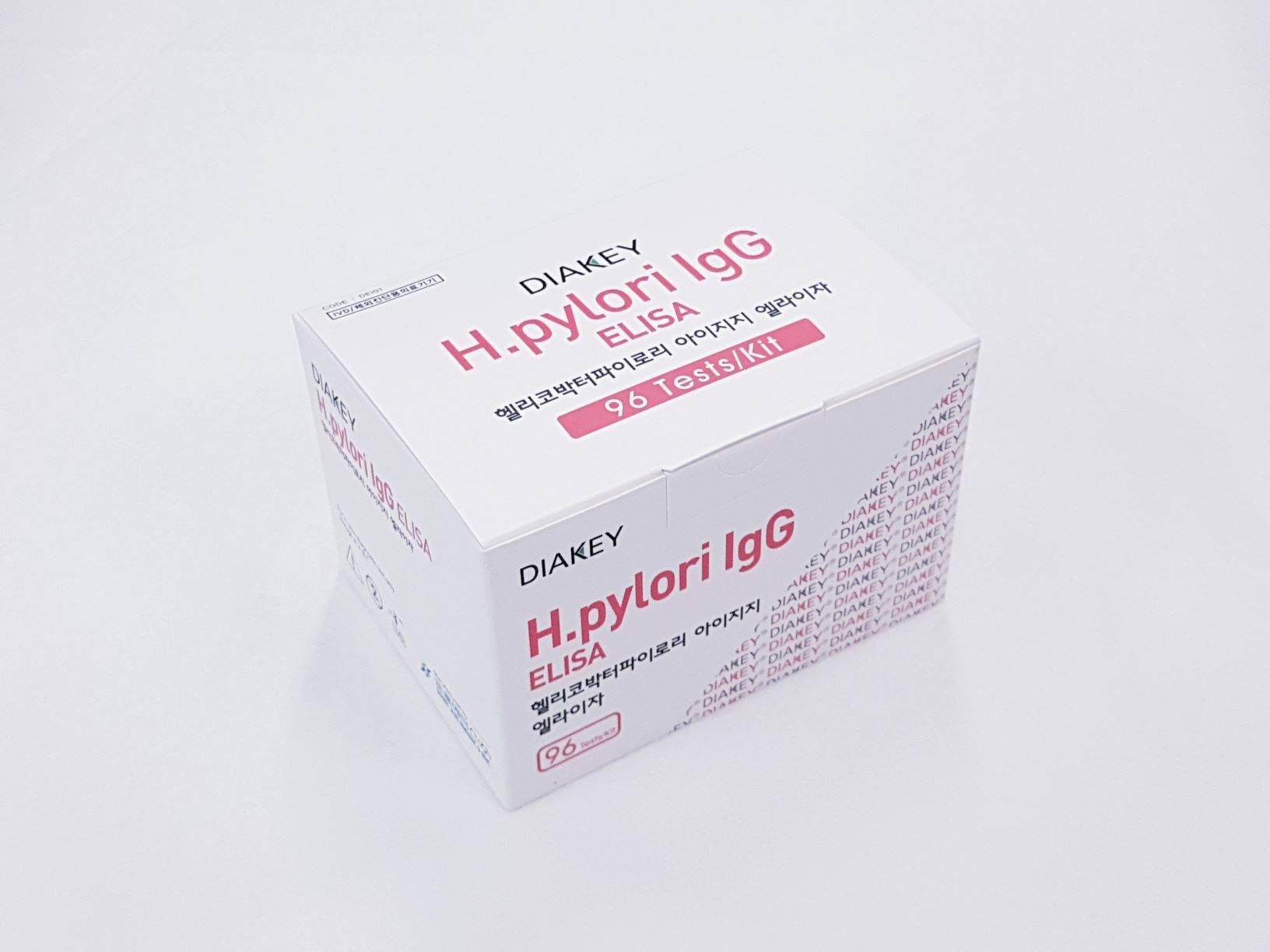Product

DIAKEY H.Pylori IgG ELISA
Intended Use
Enzyme immunometric assay for quantitative determination of anti-H.Pylori IgG in human serum or plasma
Introduction
The genus Campylobacter comprises Gram negative bacteria 0.5~5um long and 0.2~0.5um in diameter. These bacteria have a typical curved, spiral single or multiple ‘’S‘’ shape. They are highly motile with a characteristic movement making them easy to identify in gresh preparations. Helicobacter Pylori (previously called Campylobacter pyloridis and successively Campylobacter pylori) was initially isolated by Warren and Marshall from biopsy samples taken from patients suffering from active chromic gastritis. Subsequently many other authors have confirmed the close association between this bacterium and gastroduodenal pathologies. In fact it is now clear that Helicobacter pylori is the principal etiologic agent in type B gastritis (chronic active antral gastritis) a pathology for which it appears to be the triggering and perhaps aggravating factor (debate continues on this point). Undoubtedly data are available which substantiate the predominant role of Helicobacter pylori in recurrent duodenal ulcer.
Principle of the Assay
The DIAKEY Helicobacter Pylori IgG ELISA is enzyme immunoassay method (ELISA), where horseradish peroxidase is used as enzyme conjugate. During the first incubation, the sample anti-H.Pylori IgG antibodies binding with antigen, if any, are bound to the streptavidin coated wells. A wash cycle eliminates all unbound material, in the incubation that follows, a second antibody (anti-human IgG conjugated with horseradish peroxidase) will bind to the H.Pylori-antigen-antibody complex. After a further wash cycle a colorless Chromogen solution (Tetramethyl-benzidine, TMB) is added to the wells, where it yields a colored compound, by reacting with the peroxidase enzyme, Color development will be stopped by adding H2SO4. The color intensity, measured in a spectrophotometer at 450 and at 620nm, will thus be directly proportional to the anti-H.Pylori IgG antibody concentration in calibrators and samples.
Handling Precaution
- Do not use mixed reagents from different lots.
- Do not use reagents beyond the expiration date.
- Use distilled water stored in clean container.
- Use an individual disposable tip for each sample and reagent, to prevent the possible cross-contamination among the samples.
- Rapidly dispense reagents during the assay, not to let wells dry out.
Use Precaution
- Wear disposable globes while handling the kit reagents and wash hands thoroughly afterwards.
- Do not pipette by mouth.
- Do not smoke, eat or drink in areas where specimens or kit reagents are handle.
- Handle samples, reagents and loboratory equipments used for assy with extreme care, as they may potentially contain infectious agents.
- When samples or reagents happen to be spilt, wash carefully with a 1% sodium hypochlorite solution.
- Dispose of this cleaning liquid and also such used washing cloth or tissue paper with care, as they may also contain infectious agents.
- Avoid microbial contamination when the reagent vial be eventually opend or the contents be handled.
- Use only for IN VITRO.

